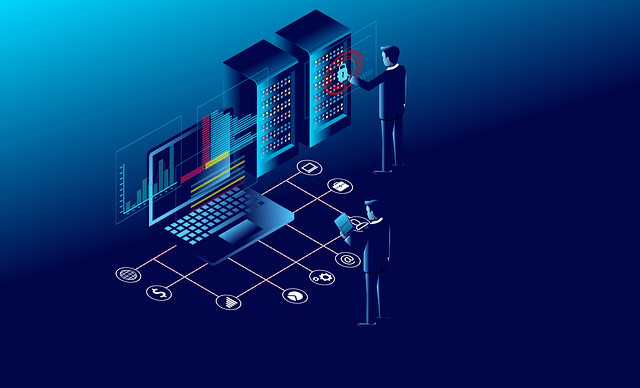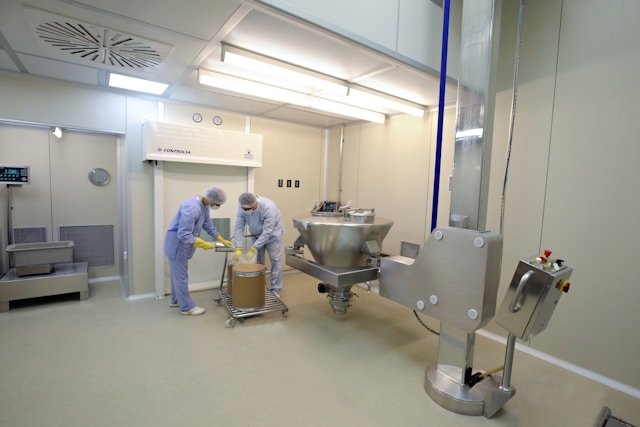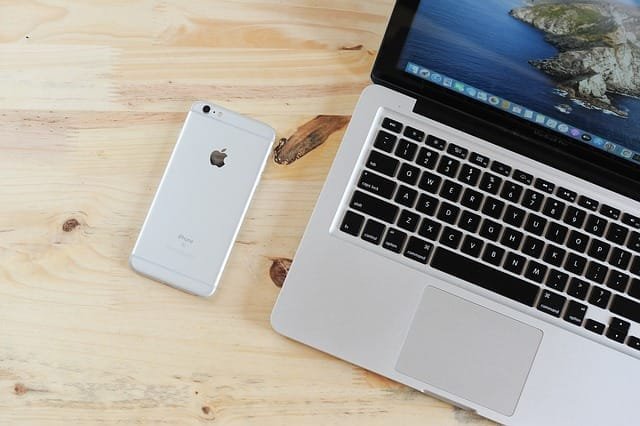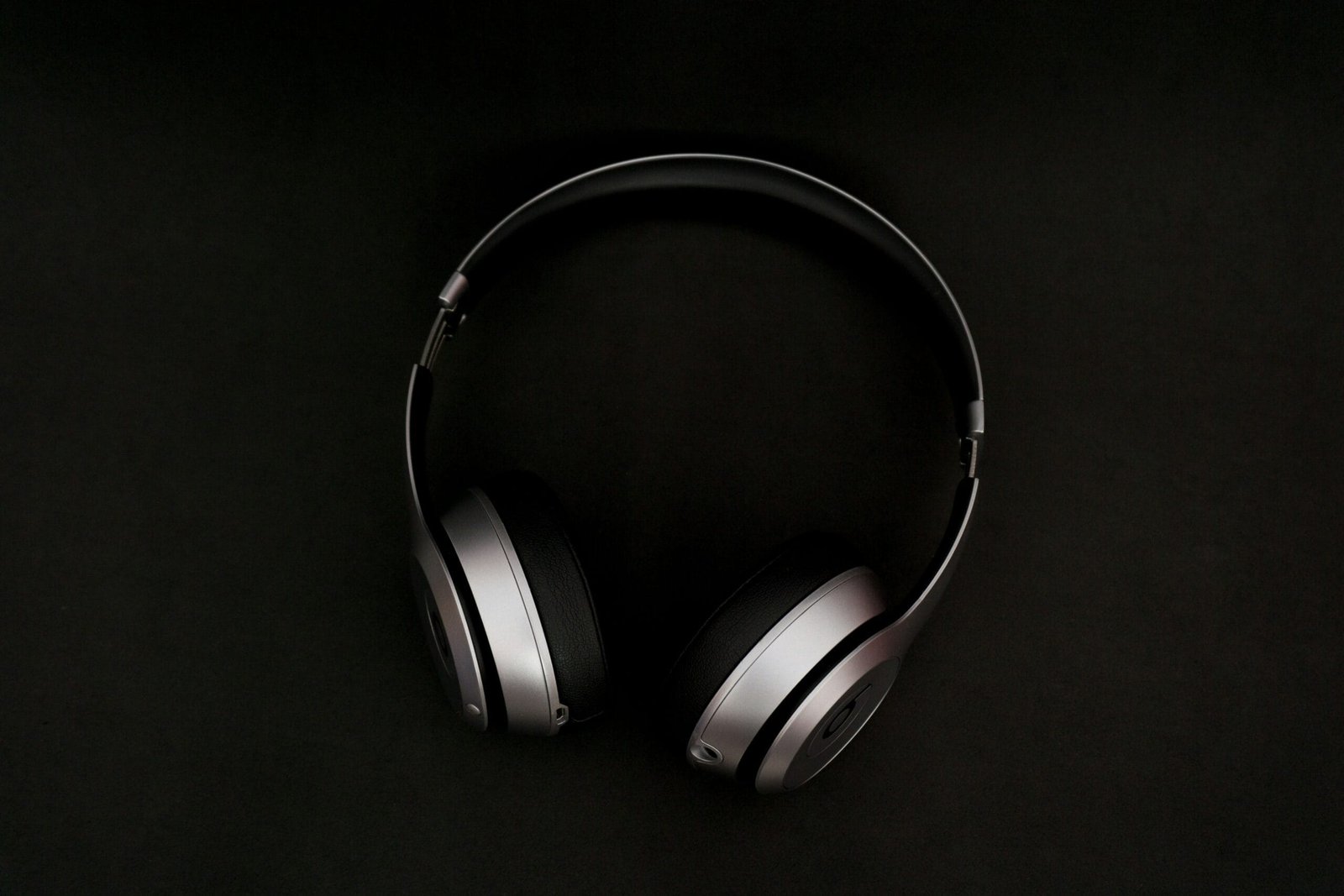7 Mind-Blowing Ways Polysomnographic Technology is Changing Sleep Science Forever
What’s All the Buzz About Polysomnographic Technology?
Many people think sleep studies are just about watching someone snore in a room full of wires. Sounds boring, right? But here’s the truth — polysomnographic technology is anything but boring. It’s one of the coolest, most high-tech tools in modern medicine.
This isn’t just some fancy way to track your snoring. Nope. This technology digs deep into how your brain, lungs, and heart work while you’re completely knocked out. And it’s changing how we understand sleep disorders like sleep apnea, insomnia, narcolepsy, and more.
So, if you’ve ever felt tired all day, even after a full night’s sleep, or wondered what’s going on in your brain when you’re dreaming, this blog’s for you.
We’re diving into what polysomnographic tech is, how it works, and why it’s the backbone of every legit sleep study today. And don’t worry — we’ll keep things chill and simple. No medical jargon overload here.
What is Polysomnographic Technology (And Why Should You Care?)
Let’s clear one thing up first: polysomnographic technology (also called PSG technology) isn’t just about a bed, wires, and watching you sleep. It’s a powerful system that records and analyzes a bunch of stuff happening in your body while you’re catching Z’s.
Here’s what it does — it measures things like:
- Brain waves (EEG)
- Eye movement (EOG)
- Muscle activity (EMG)
- Heart rate (ECG)
- Oxygen levels
- Breathing patterns
- Snoring sounds
- Body movement
Right? All of this info is collected using high-tech polysomnographic equipment connected to your body while you sleep in a clinic or even at home using home sleep study devices.
Now, why should you care about all this?
Well, if you’re constantly tired, snore like a bear, or wake up gasping, there might be something going on that regular check-ups won’t catch. This is where sleep monitoring systems come in. They help doctors spot problems like:
- Sleep apnea (when your breathing stops and starts)
- Restless leg syndrome
- REM behavior disorder
- Insomnia and disrupted sleep cycles
Doctors call this whole process a polysomnographic sleep study, and it’s kind of like a full-body scan, but while you’re asleep.
And the best part? You don’t feel a thing. You just sleep, and the machines do all the hard work. These sleep lab machines use sensors to collect real-time data that can save lives.
So yeah, it’s not just sleep science — it’s life-saving technology that gives doctors a peek inside your night-time health.
Whether you’re curious, dealing with weird sleep patterns, or exploring a career in sleep study tech, understanding what polysomnographic technology is used for is your first step. And we’re just getting started.
How Does Polysomnographic Technology Work?
Let’s bust a myth right here: polysomnographic technology isn’t just about sticking a few wires on your head and hoping for magic results. It’s not that basic. There’s a lot of smart science and tech working quietly in the background.
So, how does this thing work?
When someone gets a polysomnographic sleep study, a trained sleep technician connects a series of non-invasive sensors to the body. These sensors are hooked up to a PSG machine — short for polysomnographic monitor — that records a variety of sleep-related data. Think of it like a sleep detective kit that’s collecting clues all night long.
Here’s a breakdown of what’s tracked:
- EEG sensors measure brain waves to tell if you’re in deep sleep, REM sleep, or barely dozing off.
- EOG sensors track your eye movements (super useful for spotting REM sleep).
- EMG sensors pick up muscle activity, especially around your chin, legs, and sometimes chest.
- Breathing monitors check how well you’re inhaling and exhaling.
- ECG leads follow your heart rate.
- Pulse oximeters clip to your finger to measure oxygen levels.
The PSG machine doesn’t just collect data — it stores everything digitally so a sleep specialist can review it later. These machines often include oxygen saturation monitors, respiratory belts, and snore microphones, too. Every little movement or pause in breathing is recorded.
Now, if you’re wondering, “How does polysomnographic technology work at home?”, the process is similar, just with simpler setups. Home sleep study devices are available but come with fewer sensors. They still monitor key data like oxygen, heart rate, and breathing, enough to catch serious sleep disorders like sleep apnea.
The takeaway? This isn’t guesswork. It’s real-time, high-resolution monitoring of your sleep health. And it works quietly while you snore.
Inside a Sleep Lab: Tools and Machines That Do the Magic
You might imagine a sleep lab as a cold, creepy hospital room. But in reality? It’s more like a comfy hotel room — just with some next-level gadgets around.
Inside a sleep lab, the real heroes are the machines. These advanced devices are what make polysomnographic technology so accurate and reliable.
Let’s talk about the stars of the show:
Polysomnographic Monitors (AKA PSG Machines)
These are the main units that collect all the data. They record dozens of channels at once — brain waves, breathing, heart rate, muscle movement, and more. The latest models even come with touchscreen interfaces and cloud storage for easier access and sharing of test results.
Sleep Lab Machines
Apart from the main PSG monitor, there are other sleep lab machines like:
- EEG amplifiers to boost brainwave signals
- Respiratory effort belts that detect chest and abdominal movement
- Thermistors and nasal cannulas to monitor airflow through your nose
- Body position sensors to know whether you’re on your back or side
- Snore microphones to pick up sound vibrations
These machines are connected to a centralized system where the data is recorded, stored, and analyzed by sleep techs. Think of it like a control room watching over your night’s journey through sleep stages.
Sleep Monitoring Systems
Modern sleep labs use sleep monitoring systems that combine hardware and software. These systems allow real-time sleep tracking, help with technician sleep scoring, and can even flag unusual patterns as the study is happening. Some systems now integrate AI in sleep diagnostics, making results faster and more accurate.
Wondering about the best machines for polysomnographic sleep studies? Top brands today offer digital PSG systems with high sensitivity, wireless options, and mobile access. That means better results and a more comfortable experience for patients.
So, when you walk into a sleep lab, don’t let the wires freak you out. Every gadget is designed to give doctors the clearest picture of your sleep, so they can help you sleep better and live healthier.
Common Sleep Disorders Detected with Polysomnographic Technology
Here’s a common myth: “If I’m sleeping at night, I must be fine.” Well, not exactly. You might be asleep, but your body could be doing all sorts of weird things without you knowing it. That’s the beauty of polysomnographic technology — it doesn’t just look at whether you’re asleep or awake. It reveals how well you’re sleeping.
Let’s break down the major sleep disorders this tech helps detect:
1. Obstructive Sleep Apnea (OSA)
This is the big one. It’s when your airway gets blocked during sleep, often by the soft tissues in your throat. You stop breathing for a few seconds (or longer), then suddenly gasp or snore yourself awake. A polysomnographic sleep study for sleep apnea is the gold standard test to catch this.
2. Central Sleep Apnea (CSA)
Different from OSA, here your brain simply forgets to tell your body to breathe. It’s less common but equally serious. The PSG machine can detect the pauses in breathing and pinpoint if it’s brain-related.
3. Insomnia
People usually don’t think you need high-tech tools to figure out insomnia, but sleep monitoring systems can identify whether you’re getting into deeper stages of sleep or just tossing and turning all night.
4. Narcolepsy
This one’s tricky. Narcolepsy causes people to fall asleep suddenly, even during the day. Through polysomnographic recording followed by a Multiple Sleep Latency Test (MSLT), sleep specialists can track how fast and how often you fall into REM sleep, a big clue in diagnosing narcolepsy.
5. REM Sleep Behavior Disorder (RBD)
If you act out your dreams — kicking, punching, or yelling while asleep — you may have RBD. A polysomnographic evaluation tracks REM stages along with muscle movement to detect abnormal behaviors.
6. Periodic Limb Movement Disorder (PLMD)
This is when your legs jerk uncontrollably during the night. Most people don’t even know it’s happening until a sleep study technician shows them their overnight data.
In short, this isn’t just about snoring. Polysomnographic tech uncovers hidden disorders that can affect your mood, memory, heart health, and overall well-being. Whether it’s disrupted sleep cycles, breathing irregularities, or strange nighttime movements, this tech is on it.
Why Sleep Technicians Matter (And What They Do)
A lot of people think the machines do everything in a sleep lab — just plug them in and boom, done. But nope, that’s not how it works. Behind every accurate sleep study is a skilled sleep technician (also known as a polysomnographic technologist). These folks are the real MVPs.
So, what do sleep techs actually do?
They’re trained professionals who:
- Set up all the sleep study equipment
- Attach sensors to the patient with precision (those sticky pads actually go in very specific spots)
- Monitor the data live — all night long
- Respond if something goes wrong mid-study
- Score and analyze the sleep data for review by a sleep doctor
In short, they make sure the entire process goes smoothly, safely, and correctly. It’s not just a job — it’s a mix of medical knowledge, tech skills, and serious attention to detail.
Becoming a Sleep Tech
If this career sounds cool to you, there’s actually a clear path. You can enroll in a polysomnographic technology program (yes, that’s a thing) and get hands-on training. These programs usually include coursework in anatomy, physiology, sleep disorders, and equipment handling. After that, many go on to get certified by organizations like the Board of Registered Polysomnographic Technologists (BRPT).
Some even specialize further — like becoming an expert in home sleep test monitoring or using advanced PSG systems with AI-powered features.
So, while the machines might get all the attention, it’s the human behind the tech that truly makes sleep studies successful. Without sleep techs, polysomnographic testing wouldn’t be nearly as effective — or safe.
Career Opportunities in Polysomnographic Technology
Let’s bust a myth real quick: “Sleep tech jobs are dead-end careers.” Nope. That’s completely false. In reality, polysomnographic technology jobs offer a growing and rewarding career path, especially as sleep disorders become more recognized and diagnosed worldwide.
So, What’s the Career Scope Like?
There’s more to this field than just working in a hospital sleep lab. Once you’ve got the right training (through a polysomnographic technology degree program or certification course), here are some paths you can explore:
- Registered Polysomnographic Technologist (RPSGT) – This is the gold standard title. You’ll be running overnight sleep studies, analyzing data, and working closely with sleep physicians.
- Sleep Lab Manager – Got some experience under your belt? You can manage a team of sleep techs, handle scheduling, quality checks, and patient satisfaction.
- Home Sleep Testing Specialist – With the rise in at-home sleep testing, many techs now help monitor patients remotely.
- Pediatric Sleep Technician – This role focuses on kids and teens with sleep disorders, and it requires a special kind of patience and skill.
- Research Assistant in Sleep Science – If you’re into data and discovery, sleep labs and universities are conducting cutting-edge research on REM cycles, circadian rhythms, and more.
Where Can You Work?
- Hospitals and clinics
- Dedicated sleep centers
- Home healthcare companies
- Universities and research institutions
- Telehealth startups focused on sleep tracking systems
With remote sleep monitoring and AI-backed tools on the rise, the career options are only expanding. Whether you’re more into hands-on patient care or the tech side of things, there’s room to grow.
How to Become a Certified Polysomnographic Technologist
Here’s a common misconception: “You need to go to med school to work in sleep science.” Nah, that’s not true. Becoming a certified polysomnographic technologist is way more accessible than people think — and you can build a solid career in less time than you’d expect.
Step-by-Step Guide to Get Certified
Let’s keep it simple. Here’s what the path looks like:
1. Enroll in a Polysomnographic Technology Program
Look for an accredited school or community college that offers a polysomnographic technology training program. These usually take about 12 months and include both classroom work and clinical experience.
2. Get Hands-On Experience
Many programs include on-site training, but even if yours doesn’t, you’ll need clinical hours. You’ll learn how to set up PSG machines, place sensors, score sleep studies, and work with real patients.
3. Sit for the Certification Exam
Once you’ve completed the program, you’re eligible to take the RPSGT exam (Registered Polysomnographic Technologist). This is run by the Board of Registered Polysomnographic Technologists (BRPT).
4. Maintain Your Certification
After you pass the exam and become certified, it’s not over. You’ll need to complete continuing education every few years to stay current, because sleep science is always evolving.
Bonus: Some States Require Licensure
Depending on where you live, you might need a license to practice as a sleep tech. Always check your local guidelines before you start job hunting.
In a Nutshell…
Becoming a certified sleep tech doesn’t take forever. If you’re into healthcare, tech, and helping people live better, this could be your thing. With sleep disorders on the rise, career growth in sleep medicine is steady, and employers are always on the lookout for trained professionals who know their way around a polysomnographic testing device.
The Future of Polysomnographic Technology
Let’s set the record straight — polysomnographic technology isn’t stuck in the past with bulky wires and boring sleep labs. Some people think it’s outdated or too old-school to keep up with modern health tech. But that couldn’t be further from the truth.
Tech Is Transforming Sleep Studies
The future of sleep diagnostics is exciting. We’re talking about next-gen sleep tracking devices, cloud-based data analysis, and AI that can interpret sleep stages faster than ever. Here’s what’s already happening and what’s coming:
- Remote sleep monitoring is taking off — patients can now undergo at-home sleep studies using compact, wireless gadgets. No need to visit a sleep center.
- Artificial intelligence in sleep diagnostics helps flag sleep apnea events, track REM cycles, and even generate auto-reports.
- Wearables and apps are getting smarter — some are FDA-approved and capable of monitoring real-time sleep data.
- Cloud software now stores and syncs sleep study results across devices for quicker access by sleep physicians and techs.
- Soon, we might even see virtual sleep labs that run diagnostic tests via telehealth platforms.
Career Tip: Stay Updated
If you’re pursuing a career in sleep technology, it’s smart to stay in the loop with tech trends. Employers love sleep techs who understand modern tools like PSG systems, digital scoring platforms, or cloud-based CPAP tracking.
So, no polysomnographic tech is stuck in the past. It’s evolving fast, and the future looks pretty high-tech.
Final Thoughts: Is a Career in Polysomnographic Technology Right for You?
Some folks think being a sleep tech is just about watching people sleep. Not true. This job can be pretty hands-on, mentally engaging, and super rewarding — especially if you like healthcare, tech, and meaningful work.
Why It Might Be the Right Fit for You
- You enjoy working with people and helping them improve their lives.
- You’re curious about the science of sleep and health.
- You want a career that doesn’t require years of expensive med school.
- You’re comfortable with both tech and patient care.
- You’re okay with working nights (since many sleep studies happen overnight).
But It’s Not for Everyone…
If you hate night shifts, don’t like working with medical equipment, or prefer a super fast-paced job, this might not be your thing. And that’s okay.
Quick Recap
- The career outlook for polysomnographic technologists is growing.
- You can complete your sleep technologist training in about a year.
- Job opportunities exist in hospitals, clinics, research, and even at-home care services.
- The field is modernizing with AI, wearables, and cloud tech — so there’s room to grow.
Bottom Line?
If you’re looking for a healthcare job that combines people skills, tech know-how, and long-term stability, this could be a great path for you. Plus, the demand for certified sleep techs is only going up as more people prioritize better sleep and healthier living.
Frequently Asked Questions (FAQs) About Polysomnographic Technology
Let’s wrap this up by answering some of the most common questions people ask about polysomnographic technology. These answers are short, simple, and straight to the point — just the way you like it.
Q1: What is polysomnographic technology used for?
It’s used to diagnose sleep disorders like sleep apnea, insomnia, restless leg syndrome, and narcolepsy. Polysomnographic technologists monitor and record brain waves, breathing, heart rate, and movements during sleep studies.
Q2: Is polysomnographic technology a good career?
Yes, it’s a solid career choice. With increasing awareness of sleep health, there’s a high demand for trained sleep techs. You can work in hospitals, sleep labs, or even help with at-home sleep testing services.
Q3: How long does it take to become a certified sleep tech?
Typically, it takes about 1 year. You can enroll in a polysomnographic technology training program, get hands-on experience, and then take the RPSGT certification exam.
Q4: Do I need a degree to work in polysomnography?
Not always. Some programs offer certificates, but having an associate degree in polysomnographic technology or a related field can boost your job prospects.
Q5: What’s the salary of a polysomnographic technologist?
On average, sleep techs in the U.S. earn between $45,000 to $70,000 per year, depending on experience, location, and certifications.
Q6: Can I work remotely in this field?
Yes! With the rise of remote sleep monitoring systems and telehealth, many sleep technologists now support patients from home using wireless sleep study devices and cloud-based platforms.
Q7: Is night shift mandatory for sleep technologists?
In most sleep labs, yes, because sleep studies happen overnight. However, some roles (like data scoring or home test support) allow daytime or flexible hours.
Q8: What tools do sleep techs use?
They use PSG machines, EEG monitors, CPAP devices, sensors, and scoring software to analyze sleep data. Wearable sleep tech is also being used more often.
Q9: What’s the difference between a sleep technologist and a respiratory therapist?
Sleep techs specialize in sleep disorders, while respiratory therapists handle breathing issues in broader medical settings. However, some registered respiratory therapists (RRTs) also become certified sleep technologists.
Q10: Is the field growing?
Absolutely. As sleep health becomes a bigger priority, the demand for skilled polysomnographic technologists continues to rise, especially with advancements in tech and diagnostics.
Final Word:
If you’re curious about how sleep affects health, enjoy working with tech, and want a meaningful career, polysomnographic technology might just be the perfect fit. And with the info we’ve covered, you’re already one step ahead.







